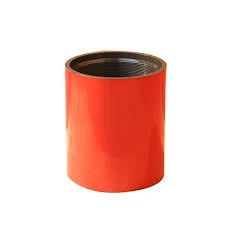- Afrikaans
- Albanian
- Amharic
- Arabic
- Armenian
- Azerbaijani
- Basque
- Belarusian
- Bengali
- Bosnian
- Bulgarian
- Catalan
- Cebuano
- Corsican
- Croatian
- Czech
- Danish
- Dutch
- English
- Esperanto
- Estonian
- Finnish
- French
- Frisian
- Galician
- Georgian
- German
- Greek
- Gujarati
- Haitian Creole
- hausa
- hawaiian
- Hebrew
- Hindi
- Miao
- Hungarian
- Icelandic
- igbo
- Indonesian
- irish
- Italian
- Japanese
- Javanese
- Kannada
- kazakh
- Khmer
- Rwandese
- Korean
- Kurdish
- Kyrgyz
- Lao
- Latin
- Latvian
- Lithuanian
- Luxembourgish
- Macedonian
- Malgashi
- Malay
- Malayalam
- Maltese
- Maori
- Marathi
- Mongolian
- Myanmar
- Nepali
- Norwegian
- Norwegian
- Occitan
- Pashto
- Persian
- Polish
- Portuguese
- Punjabi
- Romanian
- Russian
- Samoan
- Scottish Gaelic
- Serbian
- Sesotho
- Shona
- Sindhi
- Sinhala
- Slovak
- Slovenian
- Somali
- Spanish
- Sundanese
- Swahili
- Swedish
- Tagalog
- Tajik
- Tamil
- Tatar
- Telugu
- Thai
- Turkish
- Turkmen
- Ukrainian
- Urdu
- Uighur
- Uzbek
- Vietnamese
- Welsh
- Bantu
- Yiddish
- Yoruba
- Zulu
Understanding Bull Plug Wellhead Applications in Oil and Gas Industry
Understanding Bull Plug Wellheads A Comprehensive Overview
In the oil and gas industry, wellheads serve as critical components in the extraction of hydrocarbons from subsurface reservoirs. Among the various types of wellhead equipment, the bull plug wellhead plays a significant role in ensuring the safety, efficiency, and reliability of drilling operations. This article provides an in-depth look at bull plug wellheads, their functions, and their importance in the hydrocarbon extraction process.
What is a Bull Plug Wellhead?
A bull plug wellhead is a type of wellhead assembly that is designed to seal the wellbore at the surface, preventing any unwanted fluid or gas escape during drilling and production activities. This particular type of wellhead is typically fitted with a bull plug, a metal plug that can be inserted into the top of the casing to provide a secure seal. This assembly is crucial in both onshore and offshore drilling operations, where maintaining the integrity of the well is paramount.
Key Functions of Bull Plug Wellheads
1. Pressure Containment One of the primary functions of a bull plug wellhead is to contain the high pressures associated with oil and gas reservoirs. The bull plug effectively seals the wellbore, allowing operators to manage the pressure safely and prevent blowouts.
2. Fluid Control During drilling, various fluids—such as drilling mud, cement, and production fluids—are utilized. The bull plug wellhead ensures that these fluids remain contained, which is essential for both operational efficiency and environmental protection.
3. Access for Equipment Bull plug wellheads provide access points for various tools and equipment necessary for drilling and production operations. These include blowout preventers (BOPs), which help to further manage well pressure and prevent uncontrolled releases of hydrocarbons.
4. Facilitating Completion Operations Once drilling is complete, bull plug wellheads play a critical role in the well completion phase. They enable operators to install production tubing and other necessary completion equipment while maintaining a seal on the wellbore.
bull plug wellhead

Design and Materials
The design of bull plug wellheads must adhere to industry standards and regulations to ensure safety and reliability. The materials used in construction typically include high-strength alloys, capable of withstanding extreme pressures and corrosive environments. Additionally, the bull plug itself is engineered for precise fit and finish to create an effective seal, thus minimizing the risk of leaks.
Advantages of Bull Plug Wellheads
- Enhanced Safety By providing a robust seal at the surface of the well, bull plug wellheads significantly reduce the risk of blowouts and uncontrolled releases of hydrocarbons—major hazards in the oil and gas industry.
- Operational Flexibility Bull plug wellheads can be designed to accommodate various well configurations and operational needs. This adaptability allows drilling operations to be conducted efficiently, regardless of the specific geological conditions encountered.
- Cost-Effectiveness Utilizing a bull plug wellhead can lead to long-term cost savings by minimizing the risk of accidents and environmental incidents, which can be incredibly costly in terms of both direct expenses and reputational damage.
Conclusion
Bull plug wellheads are indispensable components in the oil and gas industry, contributing to the safety and reliability of drilling operations. Their ability to contain pressure, control fluids, and provide access for essential equipment makes them a vital part of the wellhead assembly. As the industry continues to evolve and innovate, the design and functionality of bull plug wellheads will likely advance, further enhancing their effectiveness and helping to secure the future of hydrocarbon extraction. Understanding the significance of such equipment is essential for professionals in the field, ensuring that operations are conducted safely and efficiently.
-
Tubing Pup Joints: Essential Components for Oil and Gas OperationsNewsJul.10,2025
-
Pup Joints: Essential Components for Reliable Drilling OperationsNewsJul.10,2025
-
Pipe Couplings: Connecting Your World EfficientlyNewsJul.10,2025
-
Mastering Oilfield Operations with Quality Tubing and CasingNewsJul.10,2025
-
High-Quality Casing Couplings for Every NeedNewsJul.10,2025
-
Boost Your Drilling Efficiency with Premium Crossover Tools & Seating NipplesNewsJul.10,2025







